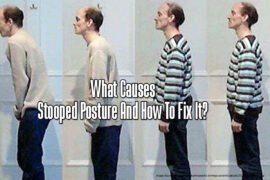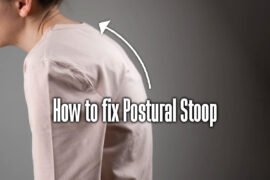Inversion tables are gaining popularity as an effective method to address back-related problems, including spinal decompression. These tables use a simple yet effective principle: by inverting the body with the head lower than the feet, gravitational force helps alleviate pressure on the spine. Spinal decompression, a technique gaining attention, holds promise for potential therapeutic benefits. Inversion table work for spinal decompression and provides relief and support for the spine by gently stretching and realigning the spine.
Understanding Spinal Decompression
Table of Contents
Spinal decompression is crucial to alleviate the daily stress that our spine faces. Understanding its significance helps in prioritizing its importance for overall spinal health. Poor posture, prolonged sitting, and the force of gravity can compress our spine, causing discomfort and, in certain instances, chronic pain. Spinal decompression helps relieve pressure on the discs and nerves by elongating the spine and creating space between vertebrae.
Inversion Table For Spinal Decompression
Inversion tables are designed to help with spinal decompression, providing relief and support for the spine. Reclining at different angles, often inverted, allows users to utilize gravity to stretch and elongate the spine. Controlled and gradual stretching can help relieve pressure, potentially reducing strain on compressed discs and nerve roots.
The Role of Inversion Table in Spinal Decompression
Inversion tables are specially designed to allow controlled inversion, enabling users to recline at different angles and position their bodies in an inverted state, with the head lower than the feet. The inverted position uses gravity force to stretch and decompress the spine.
Anatomy of an Inversion Table
Frame and Structure: Inversion tables usually comprise a strong frame made from durable materials such as steel or aluminum. This frame supports the user’s weight and provides stability during inversion.
Ankle Locking Mechanism: The ankle locking system is integral to properly functioning inversion tables. This mechanism effectively secures the user’s ankles during inversion, ensuring utmost stability and safety throughout the process.
Adjustable Incline: Inversion tables provide adjustable settings to control the angle of inversion, allowing users to customize their experience based on comfort levels. Gradual progression is possible, making it suitable for individuals of all levels.
How Inversion Tables Function
1. Body Positioning and Gravity
Inversion Angle: When a user lies down on an inversion table, the table adjusts the body’s position so that the head is positioned lower than the feet. This unique angle allows for a comfortable and effective inversion experience. This angle utilizes gravity in the opposite direction compared to what is experienced when in an upright position.
Force of Gravity: Inverted gravity opposes the body’s natural gravitational pull, providing traction that elongates the spine and facilitates controlled decompression.
2. Creating Spinal Traction
Spinal Traction: Inversion tables utilize traction to alleviate pressure and align structures in the body. Specifically, they apply traction to the spine.
Gentle Pull and Decompression: Inversion therapy uses gentle traction to elongate and decompress the spine, providing controlled relief. This decompression technique alleviates spinal disc pressure and improves alignment for better spinal health.
3. Gradual Decompression and Stretching
Gradual Decompression: Inversion tables gradually separate vertebrae, relieving pressure on spinal discs. The gradual reduction of pressure can help to alleviate the discomfort caused by compressed discs and nerves.
Stretching Effect: Inversion, through controlled stretching, can help elongate the spine, improving flexibility and reducing back stiffness.
The Process of Spinal Decompression on an Inversion Table
1. Easing Pressure on Spinal Discs:
Inverting the body on a table provides a natural separation between vertebrae, relieving pressure on compressed spinal discs caused by gravity and daily activities.
2. Expansion of Intervertebral Spaces:
Elongating the spine while inverted helps expand the spaces between vertebrae, promoting spinal health. This expansion improves circulation to enhance nutrient delivery to the discs.
3. Facilitating Fluid Movement within Discs:
Inversion promotes spinal disc hydration and flexibility through gentle rocking or movement, facilitating fluid movement within the discs.
Benefits of Using Inversion Table For Spinal Decompression
Inversion tables are a game-changer for spinal health, providing a wide range of benefits through spinal decompression. These tables are designed to help invert the body, relieve spinal pressure, and improve overall well-being. Let’s delve into their versatile nature and explore the innumerable benefits they provide.
1. Alleviation of Back Pain and Discomfort
Spinal Decompression: Inversion tables provide a key advantage in effectively decompressing the spine. Inverting the body on these tables naturally creates space between the vertebrae, effectively alleviating pressure on the spinal discs. Release of pressure can provide relief for back issues like herniated discs, sciatica, and general lower back discomfort.
Reduction of Muscle Tension: Inversion tables can help reduce muscle tension. Inversion can provide a stretching effect on the body, which has the potential to relieve muscle tension and alleviate discomfort in tight muscles.
2. Improvement in Spinal Health and Flexibility
Enhanced Spinal Alignment: Regular use of inversion tables can help improve spinal alignment, promoting better posture and relieving back pain. These tables help with controlled stretching, promoting natural spine alignment and reducing strain on supporting structures.
Increased Flexibility: Inversion therapy, which involves elongating the spine while inverted, can improve flexibility and mobility while reducing back stiffness.
3. Potential Relief for Nerve-Related Discomfort
Reduced Pressure on Nerves: Inversion tables help alleviate nerve pressure, providing relief for conditions like sciatica that cause radiating pain. Decompression techniques offered by these tables can offer much-needed relief.
4. Enhanced Circulation and Disc Health
Improved Nutrient Delivery: Inversion therapy potentially promotes better circulation within the spine. This enhanced circulation allows for improved nutrient delivery to spinal discs, aiding in their health and regeneration.
Facilitated Fluid Movement within Discs: Inversion promotes gentle movement that facilitates fluid circulation within spinal discs. This movement promotes hydration and flexibility, which helps maintain healthier discs.
5. Non-Invasive Alternative to Surgery
Reduced Dependency on Invasive Procedures: Inversion table provide a non-invasive solution for individuals in search of alleviating back-related problems. Non-surgical interventions offer a way to address discomfort while potentially minimizing the risks associated with invasive surgeries.
Best Exercises To Inversion Table For Spinal Decompression
Spinal decompression can be effectively achieved with the help of inversion table. Here are a few exercises specifically designed for use with an inversion table to help in this process:
Passive Stretch
Passive stretch let gravity naturally decompress the spine, providing relief without the need for specific exercises. Spinal decompression, a fundamental technique in inversion therapy, serves as a starting point for beginners and newcomers.
Here’s a more detailed guide to passive stretch:
Performing Passive Stretch
- Adjustment: Adjust the inversion table to your desired angle, starting with a slight incline of 20-30 degrees for beginners. Increase the angle gradually as you gain comfort and experience.
- Safety Check: Make sure the inversion table is securely locked, and your feet are properly secured in the ankle locks or straps.
- Relaxing into Inversion: Securely recline on the table, gradually reaching your desired angle while maintaining a relaxed body position.
- Breathing: Deep breathing is the most important technique to relax muscles. Inhale deeply through your nose & exhale gradually through your mouth. This helps to promote relaxation and improve the effectiveness of decompression techniques.
- Duration: Start with short inversion therapy sessions, like 1-2 minutes, and gradually increase the duration as you get used to it. Listen to your body and prioritize your well-being. If you experience any discomfort or dizziness, it’s important to stop and take care of yourself.
- Gradual Progression: Gradually increase the angle of inversion over time, progressing to higher angles (such as 60 degrees or full inversion) if your body feels comfortable and adapted to the lower angles.
Tips for Passive Stretch
Comfort is Key: Make adjustments to your body position or reduce the inversion angle if you experience any pinching or discomfort.
Gradual Approach: Gradually transition into full inversion, allowing your body to acclimate to the sensation of being inverted over time.
Use Props: You may want to consider using pillows or small towels under your head or lower back for added comfort and support.
Hydration: Ensure you stay hydrated during inversion sessions by consuming water before and after.
Precautions
- Consultation: Consult a healthcare professional before beginning inversion therapy, particularly if you have any medical conditions or concerns. It’s important to prioritize your safety and well-being.
- Safety Measures: Follow the manufacturer’s instructions and check the inversion table’s condition before use.
Inverted Stretch
The inverted stretch, performed on an inversion table, elongates the spine and provides relief by stretching the back muscles and the body. This method offers a straightforward and efficient approach to relieve pressure on the spine while enhancing flexibility.
Performing Inverted Stretch
- Positioning: Start by securing your ankles or feet in the inversion table’s ankle locks or straps. Ensure the table is securely locked in place.
- Inverting: Gradually recline on the table to achieve a comfortable inverted position. Begin with a slight angle (20-30 degrees) and adjust accordingly for maximum comfort.
- Arm Position: Extend your arms overhead, reaching towards the floor. Let gravity pull your arms gently down, elongating your spine as you stretch.
- Focus on Breathing: Relax your muscles by taking deep breaths and exhaling through the mouth, inhaling through the nose, and letting your body relax into the stretch.
- Hold and Relax: Hold the stretch for 30 seconds to a minute or as long as it feels comfortable. Relax your muscles and feel the stretch along your spine and the back of your body.
- Repetition: Repeat the stretch a few times during your inversion session, but be cautious not to overdo it, especially if you’re new to inversion therapy.
Tips for Inverted Stretch
- Maintain Control: Gently and slowly ease into the stretch, being mindful not to exert excessive force or strain on your body.
- Comfortable Position: Adjust your arm position or the inversion angle if you experience discomfort or strain. Find a more comfortable stretch.
- Focus on Relaxation: Maximize the decompression effect of the stretch by relaxing your shoulders, neck, and back muscles as much as possible.
- Breathing Technique: Emphasize deep breathing for relaxation and deeper stretching.
Precautions
- Consultation: Consult a healthcare professional before using an inversion table, especially if you have any medical conditions or concerns.
- Proper Use: Follow the safety instructions and manufacturer’s guidelines when using the inversion table.
Inverted Squats
Inverted squats on an inversion table are a variation of traditional squats that target lower body muscles by utilizing gravitational pull in an inverted position. Squats are beneficial for strengthening the legs and core and also contribute to spinal decompression.
Performing Inverted Squats
- Proper Setup: Start by securing yourself onto the inversion table, which makes sure your ankles or feet are safely locked in place.
- Inverting: Gradually recline on the table to a comfortable inverted position, starting with a modest angle of 20-30 degrees, for performing squats.
- Stabilization: Hold onto the sides or handles of the inversion table to maintain stability and balance during the exercise.
- Squat Motion: Perform a squat by bending your knees, lowering your body, keeping your back straight, and engaging your core muscles for proper posture.
- Depth: Lower yourself to a comfortable depth in an inverted squat. Adjust your range of motion to ensure safety and manageability for your body.
- Rise Up: Push through your heels and extend your legs, returning to the starting position. Maintain controlled movements throughout to complete the exercise.
- Repetition: Start with a manageable number of repetitions (e.g., 5-10 squats) and gradually increase as your body adapts to the movement.
Tips for Inverted Squats
- Controlled Movements: Maintain stability and prevent strain during squats by focusing on smooth and controlled movements during both the descent and ascent.
- Core Engagement: Engage your core to support your spine and stabilize your body during the exercise.
- Breathing: Coordinate your breathing while performing squats: inhale as you lower into the squat and exhale as you rise back up.
- Comfortable Angle: Adjust the inversion angle to a comfortable and stable level for performing squats effectively.
Precautions
- Consultation: Always consult a healthcare professional before attempting inverted squats, especially if you have existing spinal or musculoskeletal issues.
- Safety Measures: Follow the manufacturer’s guidelines and ensure proper assembly and good condition to use the inversion table safely and effectively.
Inverted Decompression Stretch
The inverted decompression stretch is an exercise performed on an inversion table designed to gently stretch and decompress the spine while allowing the surrounding muscles to relax. It aims to relieve pressure on the spinal discs and promote spinal realignment.
Performing Inverted Decompression Stretch
- Secure Position: To begin using the inversion table, secure your ankles or feet in the ankle locks or straps. Make sure the table is properly locked and stable.
- Inversion Angle: Gradually recline on the table to achieve a comfortable inverted position. Begin with a mild inversion angle of approximately 20-30 degrees and make adjustments according to your preference.
- Stabilization: Maintain stability and control during the stretch by holding onto the sides or handles of the inversion table.
- Spinal Extension: Arching your back while in the inverted position can elongate the spine and create space between the vertebrae, promoting spinal health.
- Arm Position: Extend your arms overhead and reach in the opposite direction of your feet to stretch the spine and surrounding muscles.
- Relaxation and Breathing: Relax your muscles and take deep breaths to enhance relaxation and promote stretching. Inhale deeply through your nose & exhale gradually through your mouth for optimal results.
- Hold and Release: Hold the stretched position for about 30 seconds to a minute, or as long as it’s comfortable. Relax into the stretch and slowly release it.
- Repetition: Repeat the decompression stretch during your inversion session, but be cautious not to overdo it, especially if you’re new to inversion therapy.
Tips for Inverted Decompression Stretch
- Smooth Movements: Stretch slowly and gently, avoiding sudden or jerky motions.
- Comfortable Position: If you feel discomfort or strain, adjust your body position or inversion angle for a more comfortable stretch.
- Relaxed Muscles: Relaxing your back, neck, and shoulder muscles during stretching can maximize the decompression effect.
- Breathing Technique: Emphasize deep breathing for relaxation and to enhance the stretch.
Precautions
- Consultation: Always consult a healthcare professional before trying inversion therapy or the inverted decompression stretch, especially if you have spinal issues or medical concerns.
- Safety Measures: Follow the manufacturer’s guidelines and make sure the inversion table is in good working condition.
Inverted Sit-Ups
Inverted sit-ups performed on an inversion table are a variation of the traditional sit-up exercise that takes advantage of the inverted position to engage the core muscles while also benefiting from spinal decompression.
Performing Inverted Sit-Ups
- Secure Position: To start, secure your ankles or feet in the ankle locks or straps of the inversion table. Make sure that the inversion table is securely locked and stable.
- Inversion Angle: Gradually recline on the table to reach a comfortable inverted position. Beginners should start with a moderate angle of around 20-30 degrees.
- Stabilization: Hold onto the sides or handles of the inversion table to stabilize yourself during the exercise.
- Engage Core Muscles: Cross your hands on your chest or lightly place them behind your head (avoid pulling on your neck) to engage your core muscles.
- Sit-Up Motion: Perform a sit-up in the inverted position, engaging your core muscles and exhaling as you crunch up.
- Lowering Down: Lower your upper body back down slowly, engaging the core muscles as you control the descent.
- Repetition: Start with a manageable number of repetitions, like 5-10 sit-ups, and gradually increase as you get more comfortable with the exercise.
Tips for Inverted Sit-Ups
- Controlled Movements: Ensure controlled movements throughout the sit-up, avoiding jerky or sudden motions.
- Focus on Core: Engage your core muscles throughout the exercise to support your spine and stabilize your body.
- Breathing: Coordinate your breathing by exhaling as you perform the sit-up and inhaling as you lower back down.
- Adjusting Angle: Adjust the inversion angle to a level where you feel stable and comfortable performing the sit-ups.
Precautions
- Consultation: Always consult with a medical professional before attempting inverted sit-ups, especially if you have any pre-existing back issues or medical concerns.
- Safety Measures: Follow the manufacturer’s guidelines for using the inversion table and ensure it’s properly assembled and in good condition.
Safety Considerations and Usage Tips
While inversion tables can offer relief, it’s crucial to use them safely and with caution:
- Start Gradually: Start with a slight inversion angle, allowing your body to gradually adjust over time.
- Follow Instructions: Always follow the manufacturer’s usage guidelines, including weight limits and time spent inverted.
- Consult a Professional: If you have existing medical conditions or concerns, consult a medical professional before using an inversion table.
FAQs
Q1. Is inversion good for spinal decompression?
Gravity compresses the spine over time, leading to chronic back pain in the muscles, joints, and bones. Inversion therapy, similar to gentle massage or physical manipulation, is believed to decompress the spine and potentially provide relief from symptoms like chronic back pain.
Q2. Can an inversion table help compress discs?
Inverting on an inversion table can provide relief from disc pressure by decompressing them. This natural decompression allows the discs to heal.
Q3. How long should you hang upside down to decompress your spine?
Start by hanging in a moderate position for 30 seconds to 1 minute, slowly increasing the time by 2 to 3 minutes. Listen to your body and prioritize your well-being. If you don’t feel well, return to an upright position. Gradually increase your time on the inversion table, aiming for 10 to 20 minutes per session.
Q4. What is the best treatment for a compressed disc?
If rest, pain relievers, and physical therapy fail to alleviate your pain, your doctor may administer a steroid injection around your spinal nerve. An epidural injection is used to reduce swelling, improve mobility, and ease pain caused by a herniated disk.
Q5. What is the success rate of spinal decompression?
Research indicates that spinal decompression is successful in 71% to 89% of patients. Over ten research studies have consistently demonstrated positive outcomes for patients undergoing spinal decompression treatment.
Conclusion
Inversion table provide a non-invasive and potentially beneficial solution for spinal decompression. They offer relief from back pain and promote overall spinal health. Approach their usage cautiously, understanding the benefits and importance of proper technique to reap their potential rewards safely.
You may discover a newfound sense of relief and improved spinal well-being, contributing to a healthier and more comfortable lifestyle by incorporating regular sessions on an inversion table into your routine.
Explore the world of inversion tables and make an informed choice. Find the right inversion table for your needs with our article “8 Best Inversion Tables of 2024”. Explore a variety of options designed to fit various preferences and budgets. Gain valuable insights and detailed reviews to help you make informed decisions. Click here to unlock a gateway to informed choices and elevate your journey towards spinal wellness.






